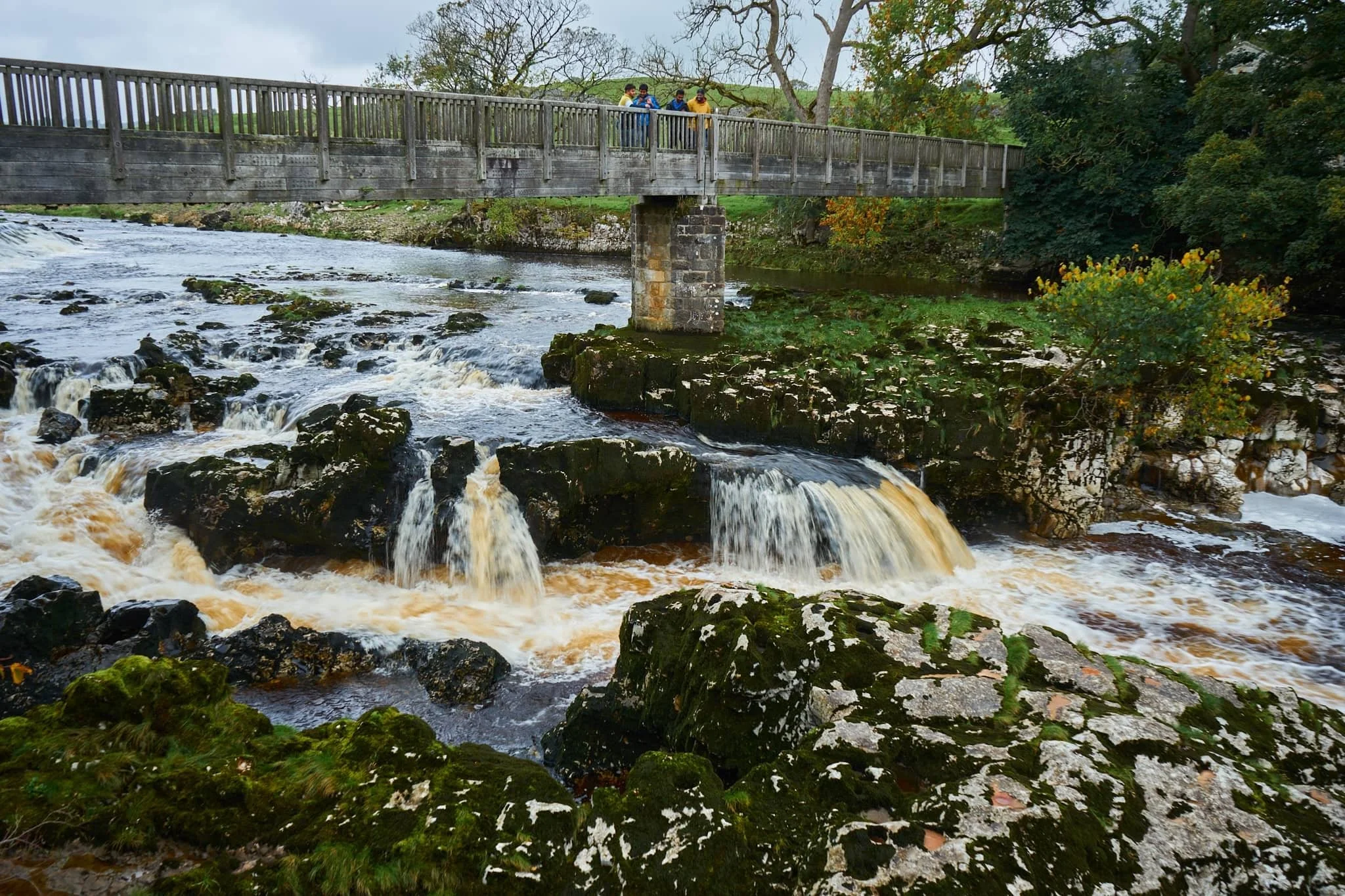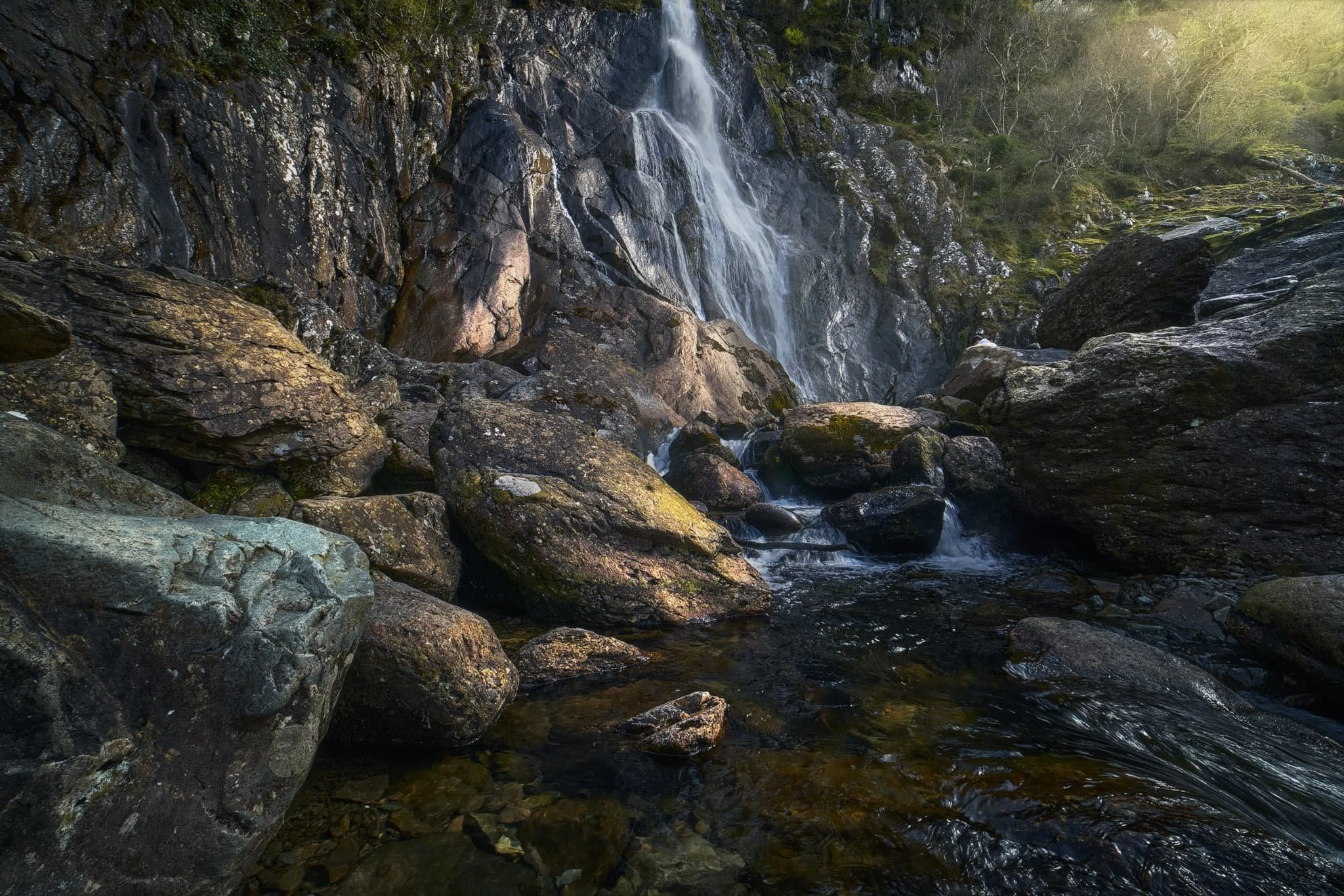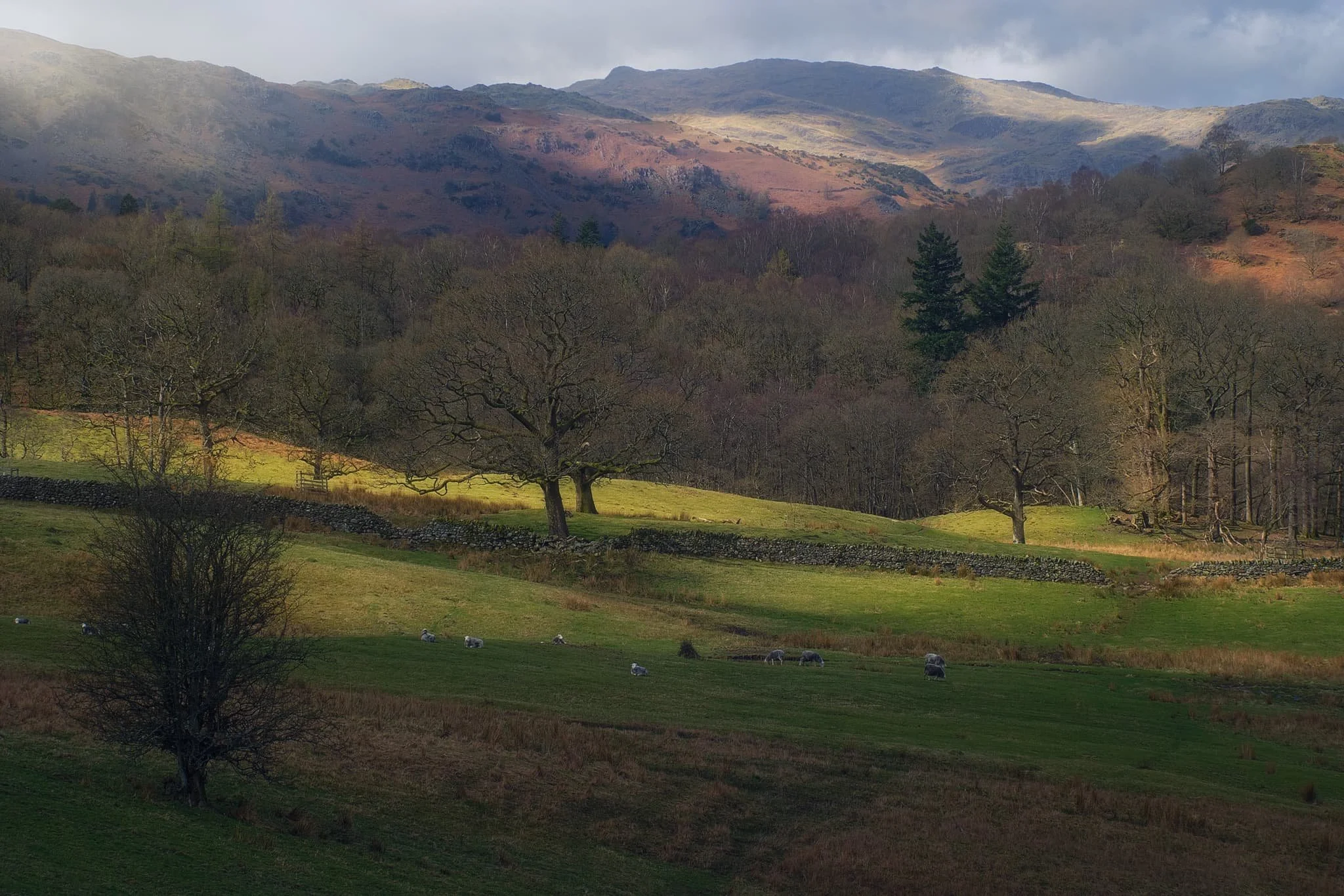The Roaches & Lud’s Church, Peak District, Autumn
We’re in the Peak District in the fortnight!
We’re in the Peak District for a fortnight!
The last time we explored the Peak District was way back in May 2015. Even then, it was only for a long weekend.
After a gentle Saturday spent enjoying the sights and sounds of Buxton, we embarked on a more strenuous Sunday; a 10km hike along the Roaches to the summit, then down into Back Forest to explore the chasm of Lud’s Church.
20,000+ steps, 1,184 ft of ascent and 1,178 ft of descent. My feet are paying the price.
Totally worth it though.
All photos shot on my Sony α7ii using my Sony FE 28–70mm f3.5–5.6 OSS zoom and Rokinon 14mm f2.8 ED AS IF UMC prime lenses. RAWs developed in Capture One for iPad, finalised in Lightroom for iPad.
The Roaches & Lud's Church, Peak District, Autumn by Ian Cylkowski is licensed under CC BY-NC-SA 4.0
The steepest and most sheer of the Roaches’ crags are at the southeastern end. In the distance, the pyramidal shape of Hen Cloud (410 m/1,315 ft) can be seen, an outlier of the Roaches separated by a col.
The Roaches are especially popular at the weekends. It’s easy to see why. Apart from hikers and freerunners, these crags attract climbers and boulderers seeking challenging projects to tackle.
To get on the trail above the Roaches, we followed the smaller trail below them and through this beautiful autumnal woodland, once the site of an old quarry.
It’s a long way down. Although the day was hazy, and unreasonably warm for an October day (20ºC), the views from the Roaches are extensive.
Looking northeast towards the Five Clouds, with a sheer drop down to the valley in front of me. Beautiful autumnal colours are just starting to emerge.
The name of this area, the Roaches, comes from the French les roches, meaning “the rocks”. These crags are made of a coarse sandstone called gritstone, deposited millions of years ago as part of an ancient river delta. Over time the surrounding landscape eroded away, leaving these isolated crags standing tall.
From the summit, 505 m above sea level, the 360º views are extensive. Beyond these crags you can make out the smaller ridge above Back Forest.
Passing through the crags on our way down to Back Forest, I spot a young couple staging a precarious “cliffhanger” for a photo.
These two windswept crags provided a wonderful frame of the distant hill towards Congleton.
The last of these overhanging crags must provide a wonderful challenge for boulders and climbers.
Our route involves a sharp drop down to the col. At this point, we’d follow the trail down to Back Forest. Our next destination was the epic Lud’s Church.
We gingerly navigated the extremely muddy path through Back Forest until, eventually, we found the way down to the chasm of Lud’s Church. Before getting down to the bottom, a small slot to the side catches my eye for a photo.
And here, we’re down to the bottom of Lud’s Church. This is a 60ft chasm in the woods of Back Forest, caused by a huge landslip in the Gritstone bedrock. Even on a warm October day, Lud’s Church is wet, dark, and refreshingly cool. It is also rather muddy.
You may be wandering about the name. This chasm has Christian history. A group of Christian reformers, the Lollards, apparently used this place to worship in the early 15th century. It may have been named after a Walter de Ludank/Walter de Lud-Auk, who was captured here at one of the aforementioned “services”.
Did you enjoy these photos?
Grassington, Yorkshire Dales, Autumn
Autumn is coming.
Autumn is coming.
Knowing that yet more rain was on its way in the afternoon, and that our best chances were further east, we elected to head into the Yorkshire Dales. Here we embarked on a nice 10 km hike, taking in the epic Linton Falls, timeless Grassington, and Grass Wood Nature Reserve.
While there were certainly hints of autumn colours, it seems we need another couple of weeks around our latitude before they reach peak conditions. That’s assuming, of course, that the weather cooperates and doesn’t just blow all the leaves straight off the trees.
Although strictly speaking a town, Grassington has a wonderfully timeless Yorkshire village vibe. As a result, it was selected as the primary location for the 2020 reboot of All Creatures Great and Small, playing the role of the fictional Yorkshire town of Darrowby.
All photos shot on my Sony α7ii using my Sony FE 28–70mm f3.5–5.6 OSS zoom lens. RAWs were largely developed using Capture One for iPad, and finalised using Lightroom for iPad and Darkroom for iPad.
Grassington, Yorkshire Dales, Autumn by Ian Cylkowski is licensed under CC BY-NC-SA 4.0
Linton Falls, a series of powerful cascades crashing over a limestone fault in the River Wharfe.
Just above the falls are a couple of weirs that sweep across the river, disrupting the flow of water so as not to sweep away at the river bank so much.
My Lisabet on the footbridge above the thundering falls. It’s quite the drop and a somewhat unnerving sensation.
From the footbridge looking down, it’s easy to make out the fault. Here, a prehistoric seismic shift in the earth will have uplifted some of the limestone in the river bed higher than the rest, creating these cascades and limestone platforms.
Looking upstream, you can make out the second weir and Linton Falls Hydro. There’s been a hydroelectric power station here since 1909, but was closed down in 1948. Decades later, in 2012, the building came back into use once again as a hydroelectric generating power station, modified to minimise harm on nature and local wildlife.
Beyond the footbridge we took the ancient Sedber Lane up the fellside towards Grassington. Looking back down offers an enchanting, if moody, Yorkshire Dales scene.
Grassington. Mentioned in the Domesday Book of 1086 CE, the village was originally documented as Gherinstone, Garsington, or Gersington. The name is a mix of Old Norse and Old English, meaning either “the town of the grassy ings” or a “farmstead surrounded by grass.”
Stopping for some coffee and cake, we then wandered gently around the village documenting some of the more timeless scenes Grassington had to offer (save, of course, for all the vehicles unceremoniously dumped everywhere).
A lot of old architecture in Grassington has survived remarkably well, aiding the village’s “ye olde worlde” appeal.
Bunting zigzagged across the skyline above us as we made our way up the higher parts of Grassington.
The Black Horse Hotel. Originally built in the 17th century as a coaching inn, it saw additions and alterations in the 18th and 19th centuries.
Above the Black Horse Hotel, we continued up Garrs Lane. Save for the road markings, you could easily transport your mind back several centuries, looking at this scene.
A beautiful cottage with window shutters. To the right an old resident had just finished tending to a beautiful garden.
Right near the junction of Main Street, Garrs Lane, and Moor Lane, this wonderful shop—Ashton House Crafts & Carving—was busy displaying all its various sculptures, carvings, and wood chimes. Just delightful.
Chamber End Fold has maintained its cobbled street, helping to cement this ageless Yorkshire scene (if we carefully ignore the car).
We continued up north out of Grassington, taking the ancient Bank Lane onto the Dales High Way and west towards Grass Wood Nature Reserve. Old stone barns decorate the way towards the woods.
These little pops of autumn hues were a tantalising prospect of what is to come.
Grass Wood Nature Reserve is one of the largest broadleaved woodlands in the Dales, comprised primarily of ash woodland interspersed with limestone scars. We followed the minor trail alongside Gregory Scar, thick in the woods.
A delicate little scene, showing the beginnings of those beautiful autumnal colours.
Nearing the exit, this part of the woods was carpeted in fallen autumnal foliage.
Nearing Grassington via Grass Wood Lane, one final composition arrested my attention near the cricket grounds.
Did you enjoy these photos?
Aber Falls, Snowdonia, Spring
Much like South Wales, North Wales and Snowdonia has its fair share of waterfalls.
Much like South Wales, North Wales and Snowdonia has its fair share of waterfalls.
One such waterfall we’ve never visited before, and was relatively close to where we’re staying for the week, is Aber Falls, just south of the village of Abergwyngregyn.
For most people, this involves a very simple walk from the Nature Reserve car park to the falls. But there is a second waterfall, less visited, that we decided to check out too.
The late afternoon/early evening gave us glorious light to work with, and the scale of the waterfalls were a sight to behold.
Photos taken on my Sony a7ii using a Vivitar “Series 1” 28–105mm f2.8–3.8 zoom and Rokinon 14mm f2.8 prime lenses. RAWs developed in Capture One for iPad, then edited and finalised in Affinity Photo 2 for iPad.
The falls are very popular. Accompanying us on the walk to Aber Falls were a large group of overseas students enjoying the delights of Wales. The falls can be seen from miles away.
We made it to Aber Falls in no time and began scrambling around the boulders, seeking compositions of this 120ft waterfall plunging into its pool.
Of course, we weren’t the only ones at the falls, so patience was required to shoot photos when people left the frame. Additionally, I shot many exposures to really push the limits of how slow I could get the shutter speed whilst handheld. The Sony a7ii served me well.
Further along the head of the valley one can find another, less-visited, waterfall. This is Rhaeadr-bach or Rhaeadr Fach, which essentially means “smaller waterfall”, with Aber Falls technically named Rhaeadr-fawr, or “bigger waterfall”. This smaller waterfall had hollowed out a perfect little raised pool before dropping further into the river.
Did you enjoy these photos?
Conwy, North Wales, Spring
Conwy is a historical treasure trove.
Conwy is a historical treasure trove.
Situated above the river of the same name, Conwy is a walled town with most of those structures surviving to the present day. The town is perhaps best known for its castle, which was built along with the walls in the late 13th century.
We enjoyed getting lost around the myriad of small streets in the town, but eventually climbed up the town walls and followed the circular trail on top of the walls, which mostly surround the town. The walk offers unparalleled views of the town, the castle, and the estuary beyond.
Add a hazy day with localised and shifting spot lighting, you’ve got conditions set up for some gorgeous photos.
All photos taken on my Sony a7ii using my Vivitar “Series 1” 28–105mm f2.8–3.8 lens. RAWs developed in Capture One for iPad, edited and finalised in Affinity Photo 2 for iPad.
At the junction with Upper Gate Street, I zoomed in on this composition of Upper Gate tower, standing imperiously above the street’s housing.
The section of the walls heading towards the Quayside allow for fantastic views across Conwy’s rooftops towards the imposing 13th century Conwy Castle.
Approaching the Postern Gate, a view straight down Castle Street being lit by the brightening day proved irresistible.
At Lower Gate this beautiful house provided the perfect foreground subject to complement the light show happening across the Deganwy hills.
Heading down from the Watchtower, I find another composition that—to me—sums up Conwy nicely.
Did you like these photos?
Ingleton Falls, Yorkshire Dales, Spring
My first set of images made with my new Sony a7II.
My first set of images made with my new Sony a7II.
A wee bit of backstory is needed.
My 40th birthday is fast approaching (if you’re at all curious, it’s on the 25th April). That’s right, the Big Four Oh.
My Dad had got wind of the notion that, ultimately, if I could ever upgrade my camera it would be to one with a bigger sensor and in-built image stabilisation.
Cue a week or so ago and Dad arrives at my house with a Sony a7II. In mint condition. Cognisant that I had a Laowa 9mm ultra-wide lens that wouldn’t properly work on a full-frame body, Dad had also sorted me out with a new equivalent ultra-wide for the Sony: a Rokinon 14mm f/2.8 ED AS IF UMC. And a new adaptor so I could continue to use my 1980s Vivitar lenses.
In other words, he’s pretty awesome.
A few days later, we had a day out together and decided on Ingleton in the Yorkshire Dales and its gorgeous Waterfalls Trail. Time to properly test out the Sony and its image stabilisation capabilities.
It did not disappoint. My ultra-wide at ISO100 and f/8 was able to get down to 1/10sec exposure with no camera shake. Amazing.
All images taken on my Sony a7II using my Vivitar “Series 1” 28–105mm f2.8–3.8 zoom, Vivitar “Series 1” 70–210mm f/2.8–4.0 zoom, and Rokinon 14mm f/2.8 ultra-wide prime lenses. RAWs developed in Capture One for iPad, then edited and finalised in Affinity Photo 2 for iPad.
The first composition on the trail that catches my eye, I quickly attach my Rokinon 14mm ultra-wide and start getting to grips with my new Sony and how it works.
The first of the major falls on the trail, Pecca Twin Falls. With my 14mm ultra-wide at ISO100 and f8, I was able to get an exposure down to 1/10sec with no camera shake, allowing for water motion. Fantastic.
The trail continues alongside and above the falls. We were by no means alone; Ingleton Falls trail was very busy that day.
The top section of Pecca Falls is a tight squeeze, but I still walked away extremely happy with how this turned out.
Arguably the main “show piece” of the entire trail: Thornton Force. I realised it’d been a while since I’d done the Ingleton Falls trail because the landscape had changed. For a start, a second waterfall was cascading down the left. Additionally, it was quite easy to crawl along a ledge to get behind the curtain of water, but those rocks seemed to have washed away.
This year’s lambs, happily dosing and mucking about in the warm spring sun.
Ingleborough’s flat top catching the light, rising high above the valley floor and its inhabitants.
Did you enjoy these photos?
Rydal Water, Lake District, Spring
The Lake District is known for many things.
The Lake District is known for many things.
Its lakes, of course. The fells. All the valleys. But also William Wordsworth, who was born in Cockermouth and called the Lake District home for much of his life. It was in the Lake District, wandering along the shores of Ullswater, that Wordsworth took inspiration from the plethora of daffodils along the lake’s shoreline, which ultimately resulted in his most famous poem, “I Wandered Lonely as a Cloud”.
Conscious that the end of daffodil season was approaching, Lisabet and I embarked on a wee circuit around Rydal Water, which I knew to be home to plenty of daffodils. It did not disappoint. Spring is here.
On a separate note, this is also the last set of images taken on my trusty Fujifilm X-T2. With my 40th birthday fast approaching, my Dad did the unthinkable and got me a friggin’ camera for my birthday! A Sony α7ii. Full-frame goodness, here we go.
These photos were taken on my Fujifilm X-T2 using my Vivitar “Series 1” 28–105mm f2.8–3.8 zoom and Laowa 9mm f2.8 prime lenses. RAWs developed in Capture One for iPad, then edited and finalised in Affinity Photo 2 for iPad.
Around Rydal Water there are plenty of areas to choose from when it comes to picking out daffodils for compositions. After one failed attempt behind a bench where I went slip-sliding in the mud, I found this wee clump of yellow beauties and lined up a photo.
Lovely golden light slithers across the rolling fields and the Grasmere fells above.
Below Loughrigg Terrace, a dilapidated barn provides a nice subject looking back to the Ambleside fells.






